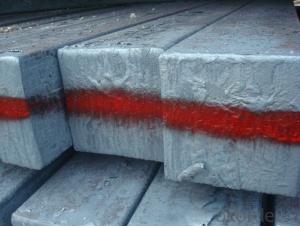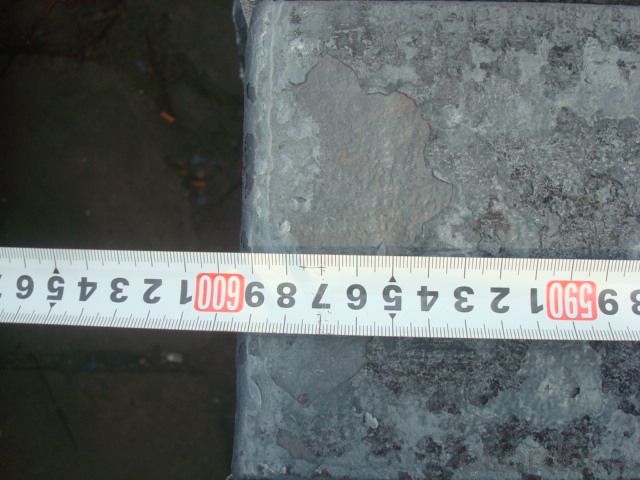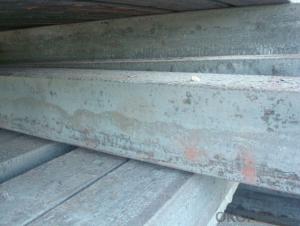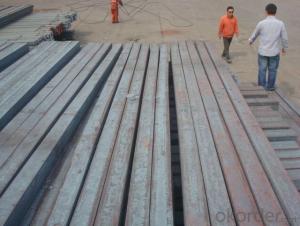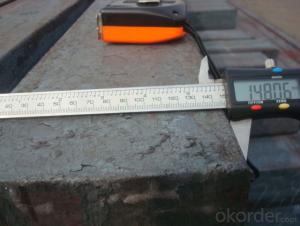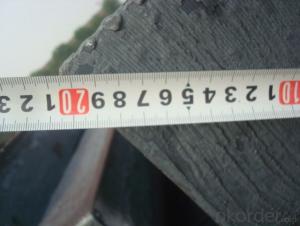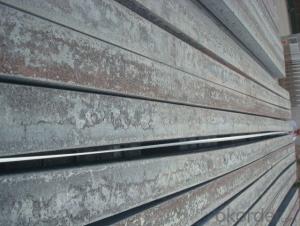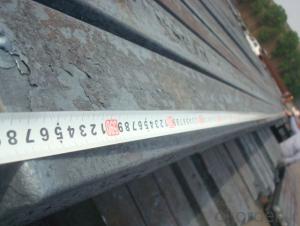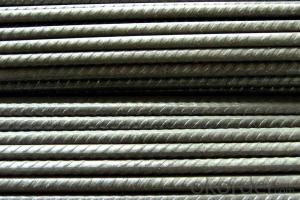Alloyed Steel Billet/Bloom Manufactured by Continue Casting Blast Furnace
- Loading Port:
- Tianjin
- Payment Terms:
- TT OR LC
- Min Order Qty:
- 1000 m.t.
- Supply Capability:
- 10000 m.t./month
OKorder Service Pledge
OKorder Financial Service
You Might Also Like
Alloyed Steel Billet/Bloom Manufactured by Continue Casting Blast Furnace
1.Structure of Alloyed Steel Billet/Bloom Manufactured by Continue Casting Blast Furnace
Continue Casting Steel Billet Manufactured By Blasting Furnace is the raw material of all kinds of steel mill. Billet section of square, round, flat, rectangular and abnormity, etc Several, mainly related to shape of rolled products. Simple rolled section steel, choose cross section of square billet or rectangular billet. rolling The sector products such as flat steel, Angle steel, select the rectangular billet or slab. Had better profiled billet when production beams, channels, and in rolling process Lines and improve the yield. The raw material of round billet is the production of seamless tube.
2.Main Features of Alloyed Steel Billet/Bloom Manufactured by Continue Casting Blast Furnace
Continue Casting Steel Billet Manufactured By Blasting Furnace section size should meet the requirements of rolling deformation and finished product quality, but also roll strength and biting condition of restrictions. General steel Billet section height H. And the roll diameter D The ratio of the ( namely H/D) Should be less than or equal to zero 0.5 . Length of steel billet by finishing temperature, Rolling time and the length of the product Or times ruler. When heated too long accident prone to bump the furnace wall of steel, too short, furnace bottom utilization rate is not high, influence the heating furnace production. For the production Choose a variety of steel and steel billet, should consider the affinities of billet, as far as possible in order to improve the productivity of the roughing mill, simplify the stock management of workshop.
There are three shapes of the steel billets: square billet, slab, rectangular billet The Chinese billet, rectangular billet is mainly suitable for rolling hot rolled strip, building reinforced bar, Ordinary wire, high speed wire rod and various small profile. Of the slab are mainly used for rolling plate and hot coil sheet.
3. Alloyed Steel Billet/Bloom Manufactured by Continue Casting Blast Furnace Images
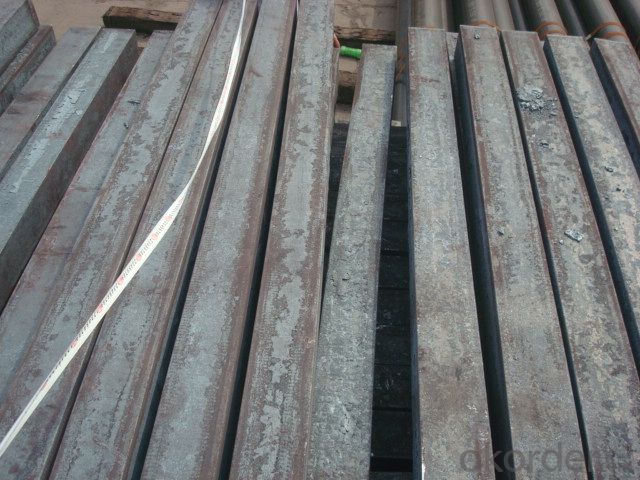
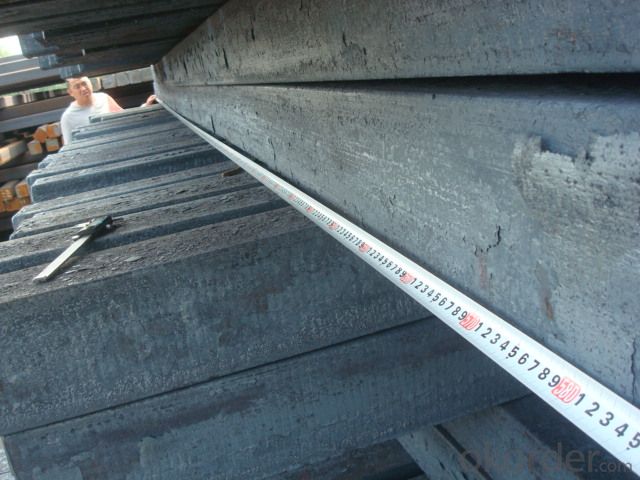
4. Alloyed Steel Billet/Bloom Manufactured by Continue Casting Blast Furnace Specification
Continue Casting Steel Billet Manufactured By Blasting Furnace rolled steel, after processing can be used for mechanical parts, forging parts, processing all kinds of steel, steel Q345B channel steel, wire rod is the role of the billet. Steel billet is used in the production of semi-finished products, generally cannot be used directly for the society. Steel billets and steel are strictly divided into standard, cannot decide to whether the business enterprise of the final product, and according to unified standards to perform the whole society. Typically, billet and the steel is relatively easy to distinguish, but for some steel billet, and have the same specification and same steel purposes (such as rolling tube billet), whether can be used for other industries, whether through steel processing process, whether through a finished product rolling mill processing to distinguish
Material standard The editor Range of thickness: 150-240 - mm + / - 5 mm width range: 880-1530 - mm + / - 20 mm Length: 3700-10000 - mm + / - 500 - mm Cross-sectional size: 64 * 64; 82 * 82; 98 * 98; 124 * 124; 120 * 150; 152 * 164; 152 * 170 mm Length: 9000 mm Section of tolerance: billet: 1.0 + / - 2.0-1.0 + / - 1.0 mm slab: width: + / - 2.0 mm thickness: + / - 3.0 mm The length tolerance: + / - 200 mm Section diagonal tolerance: 3.5-8.0 MM Billet section size protrusions requirements: < 1242 mm, do not allow; > = 1242 mm, < = 2 mm 1242 mm, < = 3 mm Beheading (shear) extension deformation: < 1242 mm billet: no control; The slab: < = 15 mm Surface tilt: no more than billet section 0.1 Bending: every 1 m length is not more than 10 mm The distortion: length < = 5 m, < = 11. ; The length of the < = 7.5 M, < = 5. Material % 3 sp/PS chemical composition: C Mn Si S P
If the chemical composition not meet the range requirement, maybe have some problem for example:
Big wait for a phenomenon, the finished slab surface convex hull, cross section on the tongue shape wave, serious billet through a long hole. (2)Internal crack.The internal crack of steel,Has a bulging belly phenomenon of rolling shear255 garlgSteel cutting surface form a symmetricalThere are cracks under the single or double wave crest and wave and emit blue fire phenomenon, wave no precipitate low melting point material.
Or the heart temperature is higher than the surface temperature of ingot, the rolling bulging belly.The rolling surface of the convex of steel,When shear sag, spread, shear section on"П"Glyph crest, no low melting point material overflow the crest.
5.FAQ of Alloyed Steel Billet/Bloom Manufactured by Continue Casting Blast Furnace
We have organized several common questions for our clients,may help you sincerely:
①What kinds of the raw material of the steel billet producing?
Iron ore,coke and other chemical composition material.
②How to make the freight cost lower?
If your quantity is over 30,000tons once, the cost is lowest.
③How to make the delivery term shorter?
It is better you can purchase the normal size or you can tell us your plan in advanced.
- Q: How are steel billets used in the production of heat exchangers?
- Steel billets are an essential component in the production of heat exchangers. Heat exchangers are devices that transfer heat between two or more fluids, such as air and water, without them coming into direct contact. Steel billets, which are semi-finished metal products, serve as the raw material for manufacturing the various components of heat exchangers. Firstly, steel billets are used to create the tubes and pipes that form the primary framework of heat exchangers. These tubes are designed to withstand high pressures and temperatures while efficiently transferring heat. Steel, with its high strength and thermal conductivity, is an ideal material for this purpose. Next, the steel billets are processed through various techniques such as hot rolling, forging, or extrusion to shape them into the required dimensions. This process ensures that the tubes and pipes have the desired diameter, thickness, and length, which are crucial factors in determining the heat transfer efficiency of the heat exchanger. Additionally, steel billets are also used to produce the fins and plates of heat exchangers. Fins are thin, elongated structures that increase the surface area of the heat exchanger, allowing for enhanced heat transfer. Steel billets are shaped and cut into fins, which are then attached to the tubes or plates. These fins provide additional contact points for heat transfer and help improve the overall efficiency of the heat exchanger. Moreover, steel billets are used in the production of headers and manifolds, which are crucial components for the distribution and collection of fluids within the heat exchanger. These headers ensure that the fluids flow through the tubes and fins in a controlled manner, maximizing heat transfer and minimizing pressure losses. The strength and durability of steel make it a suitable material for these critical components. In conclusion, steel billets play a vital role in the production of heat exchangers. They are used to manufacture the tubes, pipes, fins, headers, and manifolds, which are all essential components of a heat exchanger. The use of steel ensures the durability, strength, and thermal conductivity required for efficient heat transfer in these devices.
- Q: How is the strength of steel billets measured?
- The strength of steel billets is typically measured using a tensile test, where a sample is subjected to pulling forces until it fractures. The maximum force applied during the test is recorded and used to determine the strength of the steel.
- Q: How are steel billets cut into desired lengths?
- Steel billets are commonly cut into desired lengths using various cutting techniques. One of the most commonly used methods is saw cutting. In this process, a high-speed circular saw equipped with a carbide or diamond-tipped blade is used to cut through the steel billet. The billet is securely clamped in place, and the saw blade is brought down onto the billet, slicing through it to create the desired length. Another method used is torch cutting, which involves the use of an oxy-fuel torch. The torch produces a high-temperature flame that is directed onto the billet, melting and cutting through the steel. Torch cutting is often used for larger and thicker steel billets, as it allows for more flexibility in cutting irregular shapes or angles. Additionally, plasma cutting is another technique employed for cutting steel billets. Plasma cutting involves the use of a plasma torch that generates an electrically conductive plasma arc. This arc melts the steel and blows away the molten metal, resulting in a precise and clean cut. Plasma cutting is particularly useful for cutting through thicker steel billets or for intricate shapes and designs. Overall, the cutting technique used to cut steel billets into desired lengths depends on factors such as the size and thickness of the billet, the desired precision and accuracy, and the specific requirements of the end product.
- Q: How are steel billets used in the manufacturing of machinery?
- Steel billets are used in the manufacturing of machinery as a primary raw material. They are heated and shaped into various components, such as gears, shafts, and structural frames, which are then assembled to create the machinery. The high strength and durability of steel billets make them ideal for withstanding heavy loads and harsh working conditions, ensuring the reliability and longevity of the machinery.
- Q: Billet production process
- Billets are produced by three process methods:First, through the steelmaking system of continuous casting equipment, from the direct pouring of molten steel billet;
- Q: How do steel billets contribute to the construction industry?
- The construction industry relies heavily on steel billets for several key reasons. Firstly, they serve as the primary material for producing a range of steel products used in construction, including beams, columns, and reinforcement bars. These products are essential for providing structural support and integrity to buildings and infrastructure projects. Steel billets are also vital in the manufacturing of precast concrete elements, which are widely utilized in construction. By reinforcing pre-stressed concrete beams with steel billets, their strength and durability are significantly enhanced. This enables the construction of larger and more intricate structures like bridges, stadiums, and high-rise buildings. Additionally, steel billets play a crucial role in the fabrication of steel pipes and tubes, which are extensively employed in water supply systems, sewage lines, and gas pipelines. These pipes ensure the reliable and efficient transportation of fluids and gases, thereby facilitating the proper functioning of various infrastructure networks. Apart from their structural applications, steel billets also contribute to the construction industry through their recyclability. Steel is one of the most globally recycled materials, and steel billets can be melted and reused multiple times without any loss in quality. This not only reduces the demand for new steel production but also minimizes environmental impact and waste generation. In summary, steel billets are indispensable in the construction industry due to their versatility, strength, and recyclability. They serve as the foundation for producing various steel products and play a critical role in constructing durable and sustainable buildings and infrastructure projects.
- Q: What is the role of steel billets in the manufacturing of tools and dies?
- Steel billets are essential for the production of tools and dies, playing a crucial role in the manufacturing process. These semi-finished steel products serve as the starting material, being heated, forged, and shaped to create the desired tools and dies used in different industries. The use of steel billets offers several advantages, primarily due to their high strength and durability. Steel is known for its excellent mechanical properties, such as hardness, toughness, and wear resistance. When manufacturers use high-quality steel billets, they can be confident that the resulting tools and dies will have the necessary strength and durability to withstand demanding conditions. In addition, steel billets provide versatility in terms of customization. They can be easily shaped and formed into various sizes and dimensions, allowing manufacturers to create tools and dies that meet specific requirements. Whether it's a complex mold or a precision cutting tool, steel billets offer the flexibility needed to produce intricate and accurate components. Moreover, steel billets are preferred in the manufacturing of tools and dies due to their thermal conductivity. Steel effectively conducts heat, which is crucial for processes like heat treatment, quenching, and tempering. These thermal treatments are often used to enhance the hardness and strength of tools and dies, making them more resistant to wear and extending their lifespan. In conclusion, steel billets are indispensable in the manufacturing of tools and dies. They serve as the primary material for these components, providing high strength, durability, customization options, and thermal conductivity. By utilizing steel billets, manufacturers can create tools and dies that meet the demanding requirements of various industries, ensuring optimal performance and longevity.
- Q: How are steel billets used in the production of automotive parts?
- Steel billets are commonly used in the production of automotive parts as they serve as the raw material for forging, rolling, or extruding processes. These billets are heated and shaped into various forms such as rods, bars, or sheets to create components like engine parts, suspension systems, and body frames. The high strength and durability of steel make it an ideal choice for manufacturing automotive parts, ensuring safety and performance in vehicles.
- Q: Can steel billets be used for artistic purposes?
- Yes, steel billets can certainly be used for artistic purposes. While steel billets are typically used as raw material in industrial applications such as construction or manufacturing, they can also be transformed into beautiful works of art. Artists often use steel billets to create sculptures, decorative pieces, or even functional objects like furniture. The versatility of steel allows artists to mold and shape it into various forms, while its strength and durability ensure the longevity of the artwork. Moreover, the metallic appearance of steel can add a modern and industrial aesthetic to artistic creations. Overall, steel billets offer artists a unique medium to express their creativity and create visually stunning pieces.
- Q: What are the different types of steel billets?
- There exists a variety of steel billets, each possessing its own distinct attributes and applications. Among them, the most commonly encountered types are: 1. Carbon Steel Billets: Constructed from iron and carbon, these billets are widely employed due to their exceptional strength and durability. Consequently, they find utility in numerous sectors, including construction, automotive, and machinery manufacturing. 2. Alloy Steel Billets: By incorporating diverse alloying elements such as chromium, nickel, or manganese into carbon steel, alloy steel billets exhibit improved properties such as enhanced strength, hardness, and resistance to corrosion. Thus, they are frequently employed in industries necessitating high-performance materials, such as aerospace, oil and gas, and power generation. 3. Stainless Steel Billets: These billets are manufactured with a high chromium content, resulting in superior resistance to corrosion and oxidation. They are typically employed in applications where hygiene, durability, and aesthetic appearance are of utmost importance, such as food processing, medical equipment, and architectural structures. 4. Tool Steel Billets: Engineered to possess remarkable hardness, wear resistance, and heat resistance, tool steel billets are widely utilized in the fabrication of cutting tools, molds, and dies for various industries, including automotive, manufacturing, and construction. 5. Electrical Steel Billets: Comprised of low carbon steel with unique magnetic properties, electrical steel billets find application in the production of electrical equipment, such as transformers, motors, and generators. Their significance lies in their ability to minimize energy loss and exhibit high magnetic permeability. 6. High-speed Steel Billets: These billets are alloyed with elements such as tungsten, molybdenum, and cobalt, which enable them to retain their hardness and strength under high temperature conditions. They are extensively employed in the manufacture of cutting tools necessary for high-speed cutting operations, including drills, milling cutters, and taps. These examples represent only a fraction of the diverse range of steel billets available. The selection of a particular steel billet hinges upon the specific requirements of the application, such as strength, durability, corrosion resistance, or specialized properties essential for specific industries.
Send your message to us
Alloyed Steel Billet/Bloom Manufactured by Continue Casting Blast Furnace
- Loading Port:
- Tianjin
- Payment Terms:
- TT OR LC
- Min Order Qty:
- 1000 m.t.
- Supply Capability:
- 10000 m.t./month
OKorder Service Pledge
OKorder Financial Service
Similar products
Hot products
Hot Searches
Related keywords
